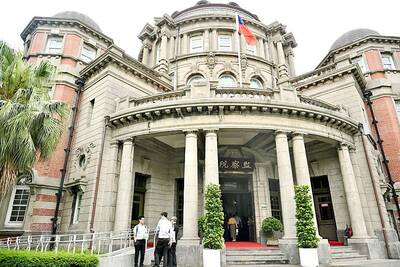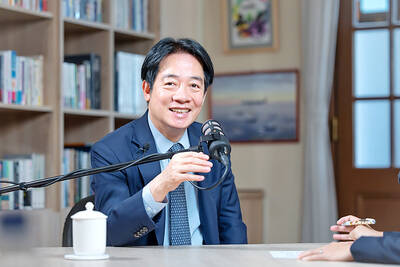The US dollar rallied on Friday on the back of a strong reading on US economic growth as the euro’s woes deepened amid growing concerns over Greece’s debt problems.
Analysts said the dollar got a major boost after the US economy grew a much faster-than-expected 5.7 percent in the last three months of last year, the best reading since 2003.
At 10pm, the euro was at US$1.3862, down sharply from US$1.3966 in New York late on Thursday as the single currency held near its lowest level since July.
The dollar rose to ¥90.19 from ¥89.92 late on Thursday.
Dealers said the headline US growth figures were the main driving force for the US currency.
“Although the surge in growth was broadly expected, beating already elevated expectations was a much needed shot in the arm for confidence after several weeks of steady decline in risk appetite,” said Michael Woolfolk at Bank of New York Mellon.
Michael Malpede at Easy Forex said the dollar’s gains were reinforced by ongoing turmoil in Europe over public deficits and news that deflation is still hurting Japan.
“The yen was pressured by report of accelerating deflation in Japan and comments from the Bank of Japan [BOJ] governor which suggests that the BOJ is ready to act against potential market turmoil,” he said.
In late New York trade, the dollar was quoted at 1.0603 Swiss francs after 1.0520 on Thursday.
The pound was at US$1.5973 from US$1.6134.
Asian currencies fell last week, led by South Korea’s won and the Philippine peso, on concern tighter lending controls in China will damp regional trade as worsening public finances in Greece curb demand for emerging-market assets.
Investors pulled US$608.5 million from funds investing in developing countries’ equities in the week ended on Wednesday, the first outflows in 12 weeks, EPFR Global said. China’s banking regulator on Wednesday told banks to “reasonably control” loan growth, having earlier in the month ordered them to set aside more funds as reserves. India’s central bank yesterday lifted the cash-reserve ratio for banks by 75 basis points, more than economists forecast.
The won dropped 0.9 percent to 1,161.65 per dollar in Seoul, capping the biggest two-week slide since February last year, data compiled by Bloomberg showed. The Philippine peso sank 0.7 percent from Jan. 22 to 46.51, while Malaysia’s ringgit lost 0.3 percent to 3.4090.
India’s rupee slid 0.1 percent to 46.1782 last week against the dollar, a third straight decline. Singapore’s dollar fell 0.2 percent to S$1.4072 and Thailand’s baht dropped 0.5 percent to 33.19. The New Taiwan dollar and the yuan were little changed at NT$31.99 and 6.8268 respectively.

Nvidia Corp yesterday unveiled its new high-speed interconnect technology, NVLink Fusion, with Taiwanese application-specific IC (ASIC) designers Alchip Technologies Ltd (世芯) and MediaTek Inc (聯發科) among the first to adopt the technology to help build semi-custom artificial intelligence (AI) infrastructure for hyperscalers. Nvidia has opened its technology to outside users, as hyperscalers and cloud service providers are building their own cost-effective AI chips, or accelerators, used in AI servers by leveraging ASIC firms’ designing capabilities to reduce their dependence on Nvidia. Previously, NVLink technology was only available for Nvidia’s own AI platform. “NVLink Fusion opens Nvidia’s AI platform and rich ecosystem for

WARNING: From Jan. 1 last year to the end of last month, 89 Taiwanese have gone missing or been detained in China, the MAC said, urging people to carefully consider travel to China Lax enforcement had made virtually moot regulations banning civil servants from making unauthorized visits to China, the Control Yuan said yesterday. Several agencies allowed personnel to travel to China after they submitted explanations for the trip written using artificial intelligence or provided no reason at all, the Control Yuan said in a statement, following an investigation headed by Control Yuan member Lin Wen-cheng (林文程). The probe identified 318 civil servants who traveled to China without permission in the past 10 years, but the true number could be close to 1,000, the Control Yuan said. The public employees investigated were not engaged in national

CAUSE AND EFFECT: China’s policies prompted the US to increase its presence in the Indo-Pacific, and Beijing should consider if this outcome is in its best interests, Lai said China has been escalating its military and political pressure on Taiwan for many years, but should reflect on this strategy and think about what is really in its best interest, President William Lai (賴清德) said. Lai made the remark in a YouTube interview with Mindi World News that was broadcast on Saturday, ahead of the first anniversary of his presidential inauguration tomorrow. The US has clearly stated that China is its biggest challenge and threat, with US President Donald Trump and US Secretary of Defense Pete Hegseth repeatedly saying that the US should increase its forces in the Indo-Pacific region

ALL TOGETHER: Only by including Taiwan can the WHA fully exemplify its commitment to ‘One World for Health,’ the representative offices of eight nations in Taiwan said The representative offices in Taiwan of eight nations yesterday issued a joint statement reiterating their support for Taiwan’s meaningful engagement with the WHO and for Taipei’s participation as an observer at the World Health Assembly (WHA). The joint statement came as Taiwan has not received an invitation to this year’s WHA, which started yesterday and runs until Tuesday next week. This year’s meeting of the decisionmaking body of the WHO in Geneva, Switzerland, would be the ninth consecutive year Taiwan has been excluded. The eight offices, which reaffirmed their support for Taiwan, are the British Office Taipei, the Australian Office Taipei, the